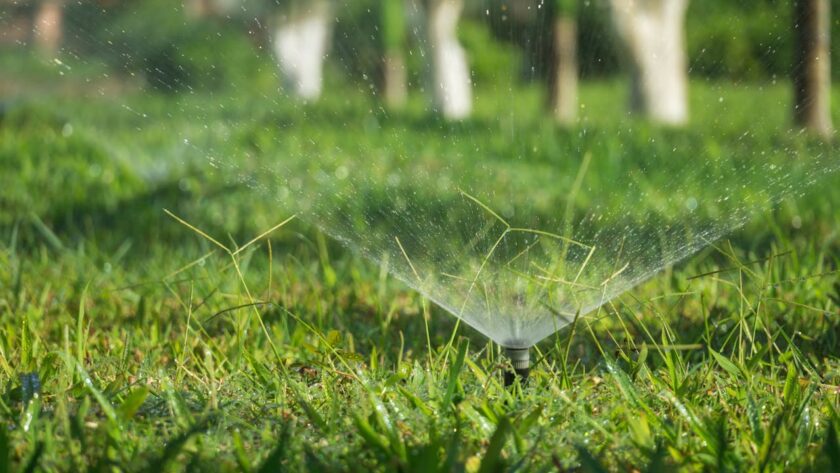Key Takeaways:
- Understanding the ecological benefits of sustainable irrigation in maintaining a healthy and environmentally benign lawn is essential.
- Spotlight on efficient irrigation techniques that encourage water conservation and optimal plant growth.
- Signs of irrigation issues to look out for and guidance on implementing timely repairs and upkeep.
- Insights into selecting the best irrigation repair services that align with environmentally responsible practices.
Water is the lifeblood of any garden or lawn, yet it is often misused, leading to environmental degradation and a higher utility bill. This is where efficient irrigation comes into play—strategic use of water resources that promotes a thriving garden ecosystem, requires fewer repairs, and results in sustainable upkeep. Suppose you’re not equipped to troubleshoot and repair an intricate irrigation system alone. In that case, seeking out professionals specializing in irrigation repair in Kent is advised to ensure your lawn stays lush without contributing to water waste.
Ecological Imperatives for Sustainable Lawn Maintenance
The iconic green lawn signifies responsible property ownership in urban and suburban areas. Yet, its impact on the environment varies. An adequately tended, water-efficient lawn fosters beneficial insect habitats, supports pollinators, and provides cooler ground temperatures in hot climates. This principle also applies to irrigation repair Kent, ensuring sustainability. This green blanket spearheads extensive ecological benefits, such as carbon sequestration, soil stabilization, and stormwater management, underpinning the local ecosystems in which we live.
Irrigation Efficiency: Saving Water and Promoting Growth
Global water challenges have elevated the conversation around water conservation, particularly in lawn and garden care. This resource management aspect is crucial because the non-targeted application or overwatering can lead to problems such as topsoil erosion, nutrient leaching, and the unnecessary bloating of water bills. Homeowners can dramatically reduce their water footprint by adopting modern irrigation systems with drip lines, weather-sensitive controllers, and moisture sensors. Such precision-driven assets can deliver water directly to the root zones of plants, avoiding wastage and promoting more profound root growth, which, in turn, strengthens the lawn’s resilience to drought and disease.
Spotting Trouble: Early Signs of Irrigation Failures
Evidence of irrigation malfunction may not always be as overt as a geyser spurting from your front yard. Sometimes, the subtle clues that reveal underlying problems—unexplained variations in turf color, erratic growth patterns across the lawn, or a surprising increase in your water bill might all point to irrigation issues. Detecting these red flags early on is paramount to nipping more severe complications in the bud. Substantial cost savings can be realized through vigilant observation and timely repair of trivial defects before they become significant and expensive malfunctions.
Achieving the Perfect Lawn through Smart Irrigation Repairs
An impeccable lawn is often the bragging right of a homeowner, and it typically signifies a well-functioning underground irrigation mechanism. However, the beauty of the lawn can be short-lived in the absence of adequately executed irrigation repairs. Identifying the type of remediation needed can range from swapping out worn nozzles to repairing broken pipes or adjusting pop-up sprinkler angles. Professional repair services, like professionals at Sunrise Irrigation, for example, can apply their expertise, ensuring these repairs are carried out efficiently and sustainably, leading to a thriving lawn ecosystem compatible with our precious water resources.
Regular Maintenance: The Heartbeat of a Healthy Irrigation System
A stitch in time saves nine; nowhere is this more accurate than irrigation maintenance. Regular check-ups and preventive maintenance can prevent the need for costlier repairs and system overhauls down the line. Season-specific maintenance, such as system deactivation during the winter months and reactivation in spring, can fend off freezing and cracking issues. Moreover, consistent inspection for signs of wear and quick responses to auxiliary problems like water pressure fluctuations or faulty valves can assure the longevity and functionality of any irrigation system.
Choosing the Right Irrigation Repair Service
Not all irrigation services are created equal, particularly regarding sustainable repair practices. When the issue outgrows the realm of DIY fixes, finding an exemplary irrigation repair service entails looking for technicians who are not only versed in the technical aspects but also advocate for water conservation. They should embody a repair ethos that prioritizes environmentally friendly practices and offers solutions that enhance the lawn’s sustainability. Credentialed services typically provide better assurances of compliance with these standards, leading to peace of mind for property owners keen on responsible stewardship of their green spaces.
Conservation on the Ground: Applying Best Practices at Home
As front-line stewards of the environment, homeowners are charged with incorporating sustainable practices in their lawn and garden care. They can effect change by educating themselves on water-wise plant choices, perfecting their irrigation schedules to coincide with the more excellent parts of the day, and implementing rainwater harvesting techniques where feasible. By embracing these practical steps, anyone can contribute to the larger sphere of water conservation and environmental care, cumulatively making a considerable positive impact.
For an in-depth look into sustainable green spaces, the Environmental Protection Agency’s Landscaping Tips is a valuable compendium of guidelines. They not only delve into how a well-maintained landscape can significantly contribute to your home’s water efficiency but also how it can become a crucial part of an eco-friendly lifestyle.




